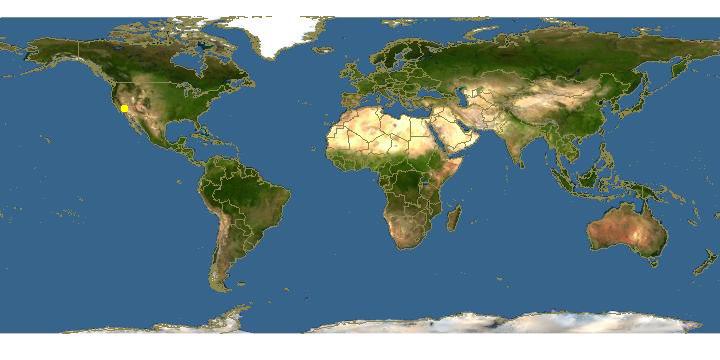
Click on map for details about points.
|
|
Overview |
Reprinted from: Cresson, E.T., 1878. Descriptions of new North American Hymenoptera in the collection of the American Entomological Society. Trans. Am. Entomol. Soc.7:81.
Head and thorax black,opaque, densely
punctured, thickly clothed with a pale pubescence; lower corners of face,
clypeus, labrum, and mandibles except tips yellow; antenna black, ferrugi
nous beneath, third joint one-third the length of fourth; thorax immaculate;
scutellum not at all prominent; tegula? yellowish; wings hyaline, dusky at
tips; legs pale ferruginous, coxa, trochanters and femora beneath, black ; ab
domen yellowish-ferruginous, subsericeous, two spots at base of first segment
and sometimes a dot on each extreme side of second, black ; in one specimen
the second segment has an obscure yellowish spot on each side; venter im
maculate, poiished. Length .27 inch.
Hab.?California. (H. Edwards). Two specimens.
|
|
|
Identification | |
Extracted from: Fowler, C. (1899). California Bees of the Genus Nomada. Academy of Natural Sciences, Philadelphia Vol. 10 no. 6.
Female. Differs from the male in that the pubescence on the face
is much shorter ; the third joint of the antennae is about one-half the length of the fourth.
In all of my specimens the first segment of the abdomen is black at the extreme base, both above and beneath, the two
black spots mentioned by Cresson sometimes fusing with this. Sometimes there is a little black on the apical margins of
segments 2—4
|
|
|
Names | |
|
|
| Supported by | |
Updated: 2024-04-19 23:23:55 gmt
|